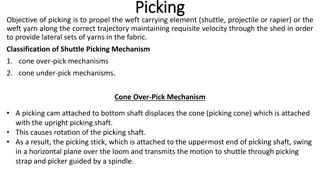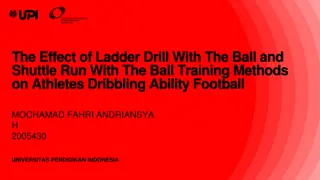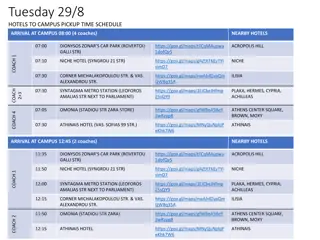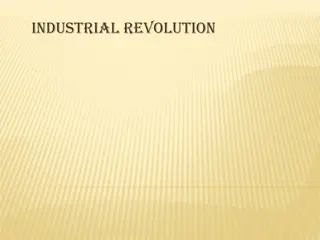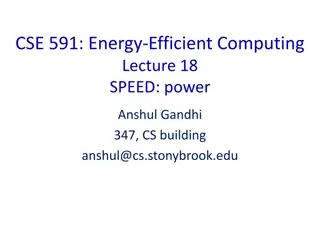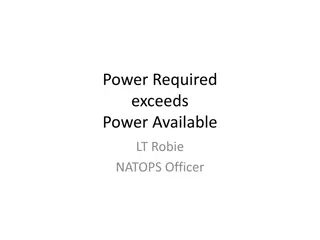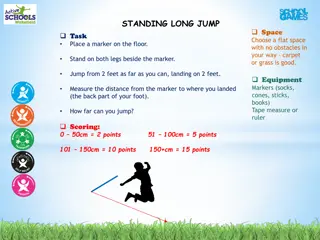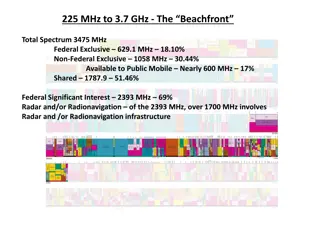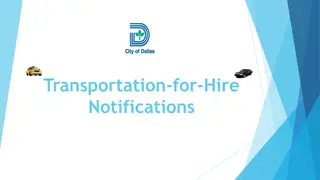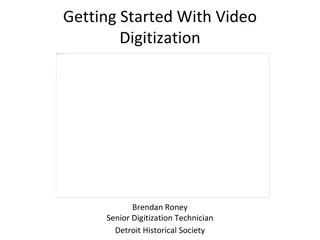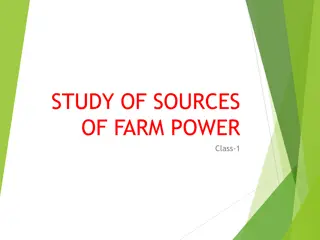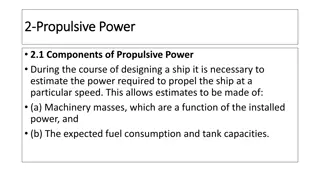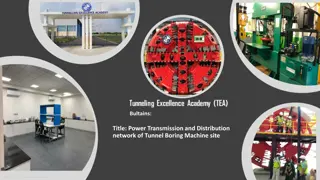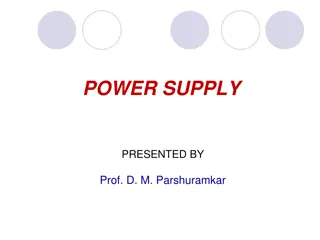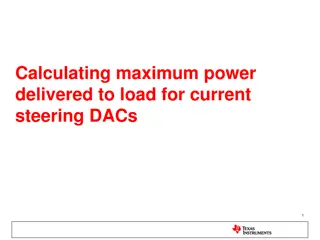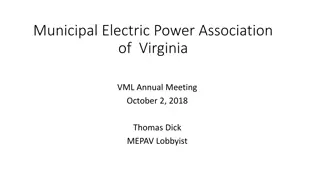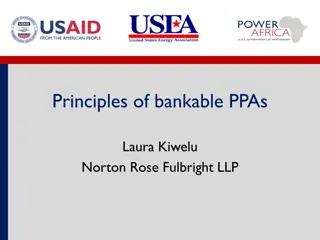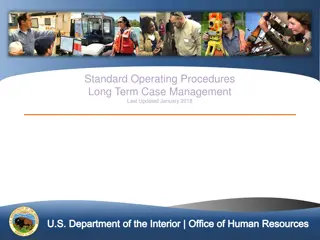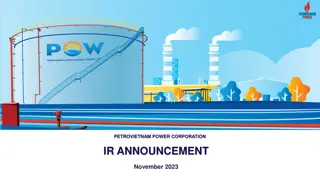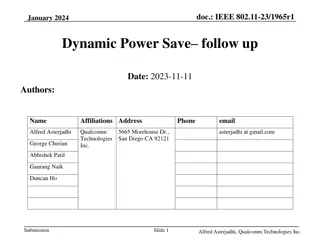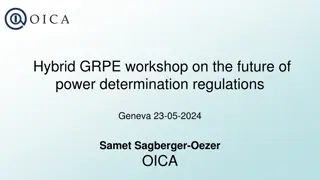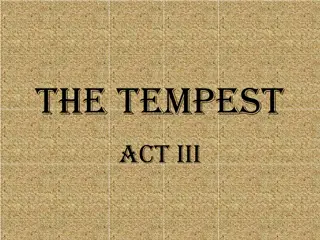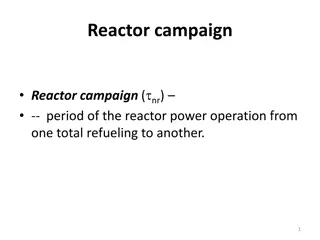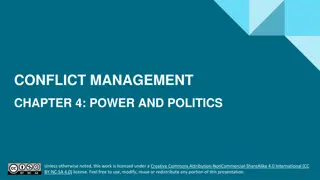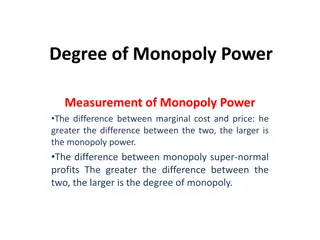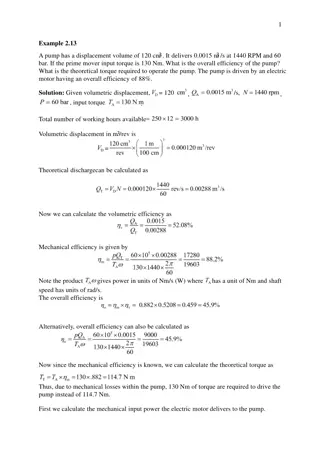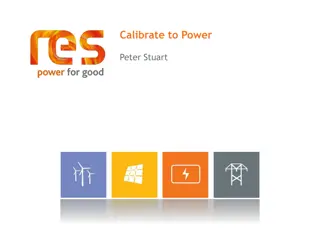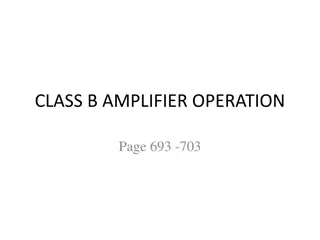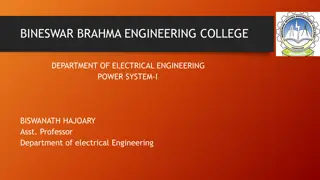
Case IH Farmall 80 Power Shuttle Farmall 95 Power Shuttle Tractor Operator’s Manual Instant Download (Publication No.48090371)
Please open the website below to get the complete manualnn//
Download Presentation

Please find below an Image/Link to download the presentation.
The content on the website is provided AS IS for your information and personal use only. It may not be sold, licensed, or shared on other websites without obtaining consent from the author. Download presentation by click this link. If you encounter any issues during the download, it is possible that the publisher has removed the file from their server.
E N D
Presentation Transcript
Farmall 80 Power Shuttle Farmall 95 Power Shuttle Tractor OPERATOR S MANUAL Part number 48090371 1st edition English December 2016 Replaces part number 47957745
Contents 1 GENERAL INFORMATION Note to the owner........................................................................... 1-1 Identification from the engine .............................................................. 1-3 Nameplate.................................................................................. 1-3 Ecology and the environment .............................................................. 1-5 Noise levels................................................................................. 1-6 Operating tips............................................................................... 1-7 Universal symbols .......................................................................... 1-9 2 SAFETY INFORMATION Safety precautions.......................................................................... 2-1 Shielding offered by the machine .......................................................... 2-2 Roll Over Protection Structure (ROPS) .................................................... 2-5 Roll Over Protection Structure (ROPS) Folding (when equipped) ....................... 2-6 Safety Decals - Cab models ............................................................... 2-7 Safety decals Models without cab ...................................................... 2-14 Before operating the machine ............................................................. 2-20 Driving the vehicle......................................................................... 2-21 Machine operation......................................................................... 2-22 Power take off (PTO) operation ........................................................... 2-23 Servicing................................................................................... 2-24 Diesel fuel ................................................................................. 2-26 Fire or Explosion Prevention .............................................................. 2-26 Air conditioner ............................................................................. 2-27 Intended use statement ................................................................... 2-28 3 CONTROLS AND INSTRUMENTS ACCESS TO OPERATOR'S PLATFORM General check .......................................................................... 3-1 Cab access/exit......................................................................... 3-2 Rearview mirrors ....................................................................... 3-4 Rear view mirrors....................................................................... 3-4 Cab - Overview ........................................................................ 3-5 Platform header - Overview ............................................................ 3-6 OPERATOR'S SEAT Operator seat........................................................................... 3-7 Seat belt ................................................................................ 3-9 FORWARD CONTROLS Shuttle shift lever ...................................................................... 3-10 Ignition switch ......................................................................... 3-10 Four-wheel drive with electro-hydraulic control........................................ 3-11 Differential lock system................................................................ 3-11 Power Take-Off (PTO) modulation function switch .................................... 3-12
Calibration switch...................................................................... 3-12 Work lights............................................................................. 3-13 Warning lights ......................................................................... 3-13 Left-hand control lever................................................................. 3-13 Windshield wiper and washer controls ................................................ 3-15 Clutch.................................................................................. 3-15 Inching pedal and throttle.............................................................. 3-15 Foot pedals of brake .................................................................. 3-16 Adjustments the steering column ..................................................... 3-16 Diagnostic socket...................................................................... 3-17 Throttle by hand ...................................................................... 3-17 LEFT-HAND SIDE CONTROLS Cigarette lighter or electrical socket ................................................... 3-18 Interior lights........................................................................... 3-18 Parking brake.......................................................................... 3-19 RIGHT-HAND SIDE CONTROLS Controls valve ......................................................................... 3-19 Hydraulic controls ..................................................................... 3-20 Power Take-Off (PTO) controls........................................................ 3-20 Differential lock system................................................................ 3-21 Right hand side controls............................................................... 3-22 REARWARD CONTROLS Switch - Rear work light ............................................................... 3-23 OVERHEAD CONTROLS Radio (if equipped) .................................................................... 3-23 Controls................................................................................ 3-24 EXTERIOR CONTROLS Power Take-Off (PTO) - Speed selection lever ....................................... 3-26 INSTRUMENT CLUSTER Instrument panel....................................................................... 3-27 Instrument cluster ..................................................................... 3-29 Gauges ................................................................................ 3-29 Instrument panel Displays .......................................................... 3-30 Ground speed setup................................................................... 3-32 Instrument cluster - Program .......................................................... 3-35 Alarm functions........................................................................ 3-36 Display warnings overview ............................................................ 3-37 Accessing stored error codes ......................................................... 3-38 Warning and advisory symbols........................................................ 3-39
https://www.ebooklibonline.com Hello dear friend! Thank you very much for reading. Enter the link into your browser. The full manual is available for immediate download. https://www.ebooklibonline.com
4 OPERATING INSTRUCTIONS COMMISSIONING THE UNIT General instructions .................................................................... 4-1 Filling the fuel tank ..................................................................... 4-2 STARTING THE UNIT Starting the engine ..................................................................... 4-3 Booster battery procedure.............................................................. 4-4 STOPPING THE UNIT Stopping the engine .................................................................... 4-4 5 TRANSPORT OPERATIONS PREPARING FOR ROAD TRANSPORT Machine loading in a transporter ....................................................... 5-1 RECOVERY TRANSPORT Towing the machine .................................................................... 5-1 6 WORKING OPERATIONS GENERAL INFORMATION Traction Front Wheel Drive (FWD) ..................................................... 6-1 Differential eletro-hydraulic lock ........................................................ 6-2 TRANSMISSION Operation 12x12 Power Shuttle transmission ................................... 6-3 Travel speeds 12x12 Power Shuttle transmission ............................... 6-4 Informational decals - Transmission ............................................... 6-5 Inching pedal and throttle........................................................... 6-6 Throttle by hand ................................................................... 6-6 REAR POWER TAKE-OFF Operating precautions.............................................................. 6-7 Rear Power Take-Off (PTO) operation with electrical hydraulic activation ........ 6-9 Operating speeds Power Take-Off (PTO) of the machine at 540 rpm, 540E rpm and 1000 rpm .......................................................................... 6-12 HYDRAULIC REMOTE CONTROL VALVES Operation - Remote control valves ............................................... 6-15 Installing attachments ............................................................. 6-17 THREE POINT HITCH Attach the implement on the hydraulic lift ......................................... 6-18 Adjustments - Three-point hydraulic lift ........................................... 6-19
Hydraulics ......................................................................... 6-22 Operation of the hydraulic system ................................................ 6-22 Maximum Work Height of the hydraulic lift ........................................ 6-24 Quick guide - Use of hydraulic system levers .................................... 6-25 Quick guide for hydraulic lift configuration ........................................ 6-26 DRAWBARS AND TOWING ATTACHMENTS Attaching a trailer.................................................................. 6-27 Tractor drawbar.................................................................... 6-28 WHEEL TRACK ADJUSTMENT Front wheel tread settings......................................................... 6-30 Steering stops ..................................................................... 6-34 Adjustement of the dynamic front mudguards..................................... 6-35 Front wheel alignment............................................................. 6-38 Rear wheel tread settings ......................................................... 6-39 BALLASTING AND TIRES Tire care Wheels ................................................................ 6-43 Tires - Inflation .................................................................... 6-46 Tires - Acceptable pressures and loads .......................................... 6-47 Tires - Compatibility table ......................................................... 6-50 Tires and ballasting ............................................................... 6-53 Ballasting - Limits ................................................................. 6-55 Ballasting solid .................................................................... 6-56 Liquid ballast ...................................................................... 6-57 7 MAINTENANCE GENERAL INFORMATION Introduction............................................................................. 7-1 Fuel handling precautions .............................................................. 7-3 Diesel fuel .............................................................................. 7-5 Specifications - Biodiesel fuel .......................................................... 7-6 Organic Acid Technology (OAT) coolant................................................ 7-8 Fluids and lubricants ................................................................... 7-9 General instructions from the machine ............................................... 7-10 Protective devices ..................................................................... 7-11 MAINTENANCE CHART Maintenance chart..................................................................... 7-13 WHEN THE WARNING LAMP LIGHTS Engine air filter, primary Cleaning .................................................. 7-15 Brake fluid Check ................................................................... 7-17 EVERY 10 HOURS OR EACH DAY Fuel system water separator - Drain .................................................. 7-18 Engine coolant level ................................................................... 7-19
Checking the engine oil level.......................................................... 7-20 Battery Cleaning .................................................................... 7-21 Cleaning the radiators ................................................................. 7-21 FIRST 50 HOURS First 50 Hour Service.................................................................. 7-22 EVERY 50 HOURS Air conditioning system Check ...................................................... 7-23 Cab air filters .......................................................................... 7-24 Lubrication points...................................................................... 7-24 EVERY 300 HOURS Change engine oil and filter ........................................................... 7-27 Replacement of fuel filter.............................................................. 7-28 Fuel transfer pump - Cleaning ........................................................ 7-28 Replace fuel prefilter .................................................................. 7-29 Engine crankcase breather filter Cleaning .......................................... 7-29 Hydraulic oil filter replacement ........................................................ 7-29 Power shuttle transmission - Oil filter replacement.................................... 7-30 Front axle differential oil level Checking the oil level ............................... 7-30 Park brake - Adjust ................................................................... 7-30 Activated charcoal filter................................................................ 7-31 Engine fan belt - Adjustment .......................................................... 7-31 Air conditioning filter drier Check ................................................... 7-32 EVERY 600 HOURS Cab air filters - Replace ............................................................... 7-33 Fuel injection system - Cleaning ...................................................... 7-33 Front axle hub oil - Change fluid ...................................................... 7-34 Wheel nuts tightening torque.......................................................... 7-34 EVERY 1200 HOURS OR ANNUALLY Engine valve clearance Check ...................................................... 7-36 Engine air filters - Replace ............................................................ 7-36 Fuel tank - Cleaning ................................................................... 7-37 Front axle drive shaft - Check ........................................................ 7-37 Front Axle Oil - Replace .............................................................. 7-38 Transmission oil - Replace ............................................................ 7-38 EVERY 1200 HOURS OR EVERY 2 YEARS Fuel injectors Check ................................................................ 7-40 EVERY 4000 HOURS OR 4 YEARS Engine coolant replacement........................................................... 7-41
GENERAL MAINTENANCE Fuel system - Bleed ................................................................... 7-44 Fuel tank screen filter - Cleaning ..................................................... 7-45 Air conditioning belt - Adjustment ..................................................... 7-45 Winshield washer reservoir Check .................................................. 7-46 Brakes - Air bleeding .................................................................. 7-46 Battery Check ....................................................................... 7-47 Fuses and Relays ..................................................................... 7-48 Work lights and lights - Adjustment ................................................... 7-51 Lamps - Replace ...................................................................... 7-52 Cab Check .......................................................................... 7-54 Protecting the electronic and electrical systems during battery charging or welding.. 7-55 STORAGE Storing the machine ............................................................... 7-57 Preparation for use after storage.................................................. 7-59 8 TROUBLESHOOTING SYMPTOM(S) Fault codes - Transmission .................................................... 8-1 Engine .......................................................................... 8-3 Hydraulic System............................................................... 8-4 Three-point hitch ............................................................... 8-4 Brakes .......................................................................... 8-6 Cab ............................................................................. 8-6 Electrical System ............................................................... 8-7 9 SPECIFICATIONS Overall Dimensions......................................................................... 9-1 Fluids and lubricants ....................................................................... 9-3 Engine ...................................................................................... 9-5 Drive........................................................................................ 9-5 Brakes ...................................................................................... 9-5 Power Take-Off (PTO)...................................................................... 9-6 Hydraulic System........................................................................... 9-6 Electrical system ........................................................................... 9-6
1 - GENERAL INFORMATION 1 - GENERAL INFORMATION###_1_### Note to the owner General Information This manual does not contain all the information related to periodical service, converting and repairs to be carried out by CASE IHprofessional service personnel. This manual has been prepared to assist you in the cor- rect procedure for running in, driving and operating your new machine, and for its maintenance. Read this manual carefully. Your machine is designed to be used in normal and customary agricultural applications. The Table of Contents page(s) are provided to have an overview of main manual s topics. A detailed alphabetic index is available at the end of this manual for locating specific items. If you require advice concerning your machine at any time, do not hesitate to contact your CASE IH dealer. He has factory trained personnel, genuine manufacturers parts and the necessary equipment to carry out all your service requirements. Normal Operation Normal operation means the use of the machine for the purpose intended by the manufacturer by an operator familiar with the machine and the mounted or towed equipment and complying with the information for oper- ation and safe practices, as specified by the manufac- turer in this manual and by the decals on the machine and the equipment. The specification are provided for your information and guidance. For further information concerning your ma- chine and equipment, consult your CASE IH dealer. All data given in this book is subject to production varia- tions. Dimensions and weight are approximate only. The illustrations do not necessarily show machines in stan- dard condition or imply that these features are available in all countries. For exact information about a particular machine, see your CASE IH dealer. Normal operation includes preparing and storing the machine, swinging components into and out of work position, adding and removing ballast, and connecting and removing accessories. Normal operation includes adjusting and setting up the machine and equipment, for the specific conditions of the field and/or the crop. Your machine has been designed and built to give maxi- mum performance, economy and ease of operation under a wide variety of operating conditions. Prior to delivery, the machine was carefully inspected, both at the factory and by your dealer, to ensure that it reaches you in op- timum condition. To keep it in this condition and ensure problem-free operation, it is important that you perform routine checks at the recommended intervals, as speci- fied in the maintenance table on the page 7-13. Routine service Routine servicing and maintenance means activities that must be performed daily by an operator familiar with the machine s characteristics and in compliance with the routine servicing information and with safe practice, as specified by the manufacturer in this manual and by decals on the machine, in order to keep it working properly. The routine service includes activities such as filling up, cleaning, washing, topping up fluid, applying grease, and replacing consumable items such as bulbs. Operator's manual storage The operator s manual supplied with your machine is an important source of information and should be stored safely. Converting, periodical service and repair The manual has been written specifically for your tractor so it is important that you make a note of the print number and issue date, which can be found on the cover. In the event the manual is lost or damaged it can be replaced with the correct version. Periodic servicing means activities that must be per- formed at given intervals by trained personnel familiar with the machine s characteristics and in compliance with the periodic servicing information and with safe practice, as specified by the manufacturer in this man- ual and in other company literature, in order for the ma- chine to keep to its expected working lifespan. About this manual This manual gives information for use of your machine, as intended and under the conditions foreseen by the manu- facturer during normal operation and routine service and maintenance. Conversion means activities that must be performed by professional service personnel familiar with the ma- chine s characteristics and in compliance with the con- version information, as specified by the manufacturer in this manual, as well as with other company instruc- tions or literature, in order to prepare the machine for a specific configuration. Read and understand it; keep it in good condition and always keep it in a safe place. 1-1
1 - GENERAL INFORMATION Replacement parts Repair means activities that must be performed by pro- fessional service personnel familiar with the machine s characteristics and in compliance with the repair infor- mation, as specified by the manufacturer in the dealer s manual, in order to restore the machine to correct work- ing order following a fault or reduced performance. It should be pointed out that genuine parts have been examined and approved by the Company. Fitting and/or using non-genuine products could have negative effects on the design characteristics of your machine, thereby affecting its safety. The Company is not liable for any damage caused by the use of 'non-genuine' parts and accessories. Only genuine replacement parts should be used. The use of non- genuine parts may invalidate legal approvals associated with this product. Cleaning the machine When using a high pressure washer, do not stand too close to the machine and avoid directing the jet at elec- tronic components, electrical connections, breathers, seals, filler necks, etc. Never direct a cold water jet at a hot engine or exhaust. Making any modifications to the machine is prohibited, without specific written authorization from the manufac- turer s After Sales Service department. Failure to comply with these rules will render the warranty null and void. Warranty Your machine is warranted according to legal rights in your country and the contractual agreement with the sell- ing dealer. No warranty shall, however, apply if the ma- chine has not been used, adjusted and maintained as per the instructions given in the operator s manual. Safety The pages in Section 2 list the precautions to be observed to ensure your safety and the safety of others. Read the safety precautions and follow the advice offered before operating the machine. Using Biodiesel Servicing after the first 50 hours Before using biodiesel in your machine, refer to the information on page 7-3 as regards storing and using biodiesel. On page 7-22 you will find the operations that need to be performed after the first 50 hours of service. This service should be performed by your CASE IH dealer. NOTICE: It is important that the 50 h service is carried out in line with the recommendation to guarantee that the machine is providing optimal performance and efficiency. 1-2
1 - GENERAL INFORMATION Identification from the engine The engine identification is engraved on a plate (1) on the left-hand side of the engine block. Note down the number here: Engine Serial No.: _____________________ 1 CUIL13TR01085AA Nameplate The Product Identification Number (PIN) can be found on the plate located on the front left-hand axle support. Product Identification Number (PIN): ________________ _______ 1 BRAG12TRLUE0347 The Product Identification Number (PIN) is engraved on the support cradle of the front axle, in front of the battery. Note down that identification here. PIN: _______________________ 2 CUIL13TRO0194AA 1-3
1 - GENERAL INFORMATION A plate in the rear of the cab/platform provides information about the Rollover Protective Structure (ROPS) and the maximum permissible weight of the machine. Cab Models 3 47546512 Models without cab 4 47546511 1-4
1 - GENERAL INFORMATION Ecology and the environment Battery recycling Soil, air, and water quality is important for all industries and life in general. When legislation does not yet rule the treatment of some of the substances that advanced tech- nology requires, sound judgment should govern the use and disposal of products of a chemical and petrochemical nature. Batteries and electric accumulators contain several sub- stances that can have a harmful effect on the environ- ment if the batteries are not properly recycled after use. Improper disposal of batteries can contaminate the soil, groundwater, and waterways. CASE IH strongly recom- mends that you return all used batteries to a CASE IH dealer, who will dispose of the used batteries or recycle the used batteries properly. In some countries, this is a legal requirement. Familiarize yourself with the relative legislation applica- ble to your country, and make sure that you understand this legislation. Where no legislation exists, obtain in- formation from suppliers of oils, filters, batteries, fuels, anti-freeze, cleaning agents, etc., with regard to the ef- fect of these substances on man and nature and how to safely store, use, and dispose of these substances. Your CASE IH dealer can also provide assistance. Helpful hints Avoid the use of cans or other inappropriate pressur- ized fuel delivery systems to fill tanks. Such delivery systems may cause considerable spillage. In general, avoid skin contact with all fuels, oils, acids, solvents, etc. Most of these products contain sub- stances that may be harmful to your health. 1 NHIL14GEN0038AA Modern oils contain additives. Do not burn contami- nated fuels and or waste oils in ordinary heating sys- tems. Mandatory battery recycling NOTE: The following requirements are mandatory in Brazil. Avoid spillage when you drain fluids such as used en- gine coolant mixtures, engine oil, hydraulic fluid, brake fluid, etc. Do not mix drained brake fluids or fuels with lubricants. Store all drained fluids safely until you can dispose of the fluids in a proper way that complies with all local legislation and available resources. Batteries are made of lead plates and a sulfuric acid so- lution. Because batteries contain heavy metals such as lead, CONAMA Resolution 401/2008 requires you to re- turn all used batteries to the battery dealer when you re- place any batteries. Do not dispose of batteries in your household garbage. Do not allow coolant mixtures to get into the soil. Col- lect and dispose of coolant mixtures properly. Do not open the air-conditioning system yourself. It contains gases that should not be released into the atmosphere. Your CASE IH dealer or air-conditioning specialist has a special extractor for this purpose and can recharge the system properly. Points of sale are obliged to: Accept the return of your used batteries Store the returned batteries in a suitable location Send the returned batteries to the battery manufacturer for recycling Repair any leaks or defects in the engine cooling sys- tem or hydraulic system immediately. Do not increase the pressure in a pressurized circuit as this may lead to a component failure. 1-5
1 - GENERAL INFORMATION Noise levels CAUTION Avoid possible hearing loss! The machine operator must wear hearing protection. Failure to comply could result in minor or moderate injury. C0070A WARNING Personal Protective Equipment (PPE) required. When assembling, operating, or servicing the machine, wear protective clothing and PPE necessary for the particular procedure. Some PPE that may be necessary includes protective shoes, eye and/or face protection, hard hat, heavy gloves, filter mask, and hearing protection. Failure to comply could result in death or serious injury. W0353A Noise is considered the most common of the pollutants that cause physical problems. Brazilian legislation establishes maximum limits for intensity and continuous or intermittent noise exposure durations. The tolerance limits for contin- uous and intermittent noise are detailed in Annex 1 to the regulatory Standard (NR15) of 1990. See the legislation in force in your country. Noise emission tests were performed while your machine was being developed. The tests were performed in line with Directive 2003/10 of the European Economic Community (EEC) or European Community (EC). Table 01 shows the average noise levels at the operator's ear. Table 01: Noise levels in dB (decibel) at operator ear level, measured as per Directive 2003/10 of the European Economic Community (EEC) or European Community (EC) for models with cab. Configuration 2 Configuration 1 Setup 3 Mini- mum throttle LH side - - Rated speed Setup 4 Setup 5 Setup 6 Model Rated speed Rated speed LH side - - LH side - - LH side - - Farmall 80 Farmall 95 86,0 84,0 82,0 84,0 80,0 80,0 Test conditions Maximum engine speed Settings Tractor moving Tractor stopped Minimum speed Rated speed Tractor with no cab Doors and Windows Configuration 1 Configuration 2 (*) Configuration 3 (**) Setup 4 Setup 5 Setup 6 X X X X X X X X Open Closed (*) In line with the reference standard, this configuration determines using the gear when the tractor speed is closest to 7.2 km/h. (**) In line with the reference standard, this configuration determines the maximum speed achieved by the tractor. It is important to stress that the use of ear protectors is recommended for the Operator and people who work close to the machines, regardless of the noise intensity and time of exposure. During operation, the machines may be driving or powering other equipment, and this in turn also produces noise. As a result, the real noise levels perceived by the Operator and people who work close to the machines can vary considerably. Always consider wearing ear protectors that are good quality, intact, and that offer maximum protection. 1-6
1 - GENERAL INFORMATION Operating tips It is important that you read the following information be- fore operating the machine. Use the lower gear ratios when towing heavy loads and avoid continuous operation at constant engine speeds. Operating the machine in a low gear with a light load and high engine speed will waste fuel. You will save fuel and minimise engine wear by selecting the correct transmis- sion ratio for each particular operation. NOTE: Before driving or operating the machine, study the safety precautions in Section 2 of this Manual. Read this section carefully for a thorough understanding ofoperationalrequirements. Itdetailsthelocationandop- eration of the various instruments, switches and controls on your machine. Even if you operate other machines, you should thoroughly read this section of the manual and ensure that you are familiar with the location and function of all of the features of the machine. Check the instruments and warning lights frequently and keep the radiator and oil reservoirs topped up to the rec- ommended levels. Pre-orientation checks Before operating the machine, ensure that you are thor- oughly familiar with the location and operation of the con- trols. Do not start the engine or attempt to drive or operate the machine until you are completely familiar with all of the controls. Itistoolatetolearnoncethemachineismoving. If in doubt about any aspect of machine operation, consult your CASE IH dealer. Perform daily lubrication and maintenance operations in accordance with Section 7. After completing the daily maintenance operations, walk around the machine in order to perform a visual inspec- tion. Special attention must be given to the following items: Run in procedure NOTICE: Your new machine will provide long and reliable service if given proper care during the first 50-hour run- ning-in period and if serviced at the recommended inter- vals. Poly 'V' belt for cracks or damage. Engine and exhaust areas for accumulation of debris. Hoses, lines and fittings for leaks or damage. Tyres for damage Loose hardware Transmission and hydraulic pump assembly / filter area for leaks or a build up of debris Avoid overloading the machine. Operating in too high a gear under heavy load may cause excessive engine overloading. Overloading occurs when the engine will not respond to a throttle increase. Do not operate without a load on the engine. This can be as harmful to the engine as overloading. Vary the type of operation carried out so the engine is submitted to a mix of heavy and light loads during the running-in period. Make any necessary repairs before using the machine. 1-7
1 - GENERAL INFORMATION Fuel-saving tips for optimum output Adequate maintenance of the machine considerably re- duces fuel consumption. 9. Do not rest your foot on the clutch pedal as this will cause clutch slippage, loss of engine power and in- creased fuel consumption. play in the clutch pedal. Maintain the specified 1. Store fuel in properly cleaned, rust and contaminant free containers. 10. Always drive the machine in the correct gear. 2. Always fill the reservoir tank at the end of each day to reduce overnight condensation of moisture in the air, so as to avoid damage to the fuel system. 11. Use a lower gear to drive down a slope and use the brakes sparingly. 12. Maintain the proper tire pressures for field work as well as for roadwork. Refer the tyre pressure chart given in this manual. Worn out tyres cause wheel slippage and waste fuel. Either retread or discard the full set of tires if they are very worn. Adhere to tyre ballasting as and when required to reduce wheel slippage and fuel consumption. 3. Fuel filters should be replaced as per recommended time schedule as the filtering capacity is not retained afterthisspecifiedtime. Itmayallowharmfulcontam- ination and damage the fuel injection system. Follow the maintenance schedule to drain the water from the filters and clean the supply pump filter. 4. Always use genuine fuel filters. See your CASE IH dealer. 13. Always use the appropriate implements to reduce diesel fuel wastage. Implements should be main- tained in good condition, as usage of worn out im- plements will waste fuel. 5. Repair diesel leaks, if any, immediately. 6. Dirt particles that may enter the engine cause pre- mature wear of lining and piston rings. This causes loss of power and excessive consumption of engine oil and fuel. Make sure that there are no leaks from the hoses and that the seal of the air filter chamber is in good condition. Keep the hose clamps tightened. 14. Always plough length wise and plan your field run to reduce fuel consumption. Adjust the wheel gauge to suit the implement and avoid overlap when you work in the field. 15. Adjust the proper engine rotation when you work with equipment driven by the Power Take-Off (PTO). If you select the wrong rotation, it will result in excess fuel consumption. 7. Follow the run-in procedure provided in this manual to achieve optimal performance of your machine. 8. If you keep the engine running at idle speed unnec- essarily for long periods, this wastes fuel. 1-8
1 - GENERAL INFORMATION Universal symbols As a guide to the operation of the machine, various universal symbols have been utilized on the instruments, controls, switches, and fuse box. The symbols are shown below with an indication of their meaning. Power Take-Off (PTO) Heater plug for cold start Turning signal Reaction control Alternator charging Transmission in neutral Accessories socket Activated memory Turn signals Implement socket Creeper selection Fuel Level Turn signals - one trailer Low speed selection Automatic fuel shut-off Percentage slip Engine speed (rpm x 100) Raising of the hydraulic lift Turn signals - two trailers High speed selection Wind shield washer Road speed Hour meter Rear hitch lower Windscreen wash wipe Hydraulic lift height threshold Engine Oil Pressure Differential Lock Heating temperature control Rear axle oil temperature Engine Coolant Temperature Hydraulic lift disabled Transmission filters and hydraulic filters Cab recirculation fan Coolant Level TransOilPressure Auxiliary Front Wheel Drive (AFWD) operated Remote control valve extension Machine lights Air conditioner Remote control valve command retraction Air Filter Restriction Warning! Main beam head Danger warning lights Remote control valve flotation Parking brake Dip Beam Malfunction! See Operator s Work lamps Variable control Brake fluid level Malfunction! (alternative symbol) Pressurized! Open carefully Stop Lamp Trailer brake Warning! Corrosive substance Horn Position control Brake fluid level TransOilPressure 1-9
Suggest: If the above button click is invalid. Please download this document first, and then click the above link to download the complete manual. Thank you so much for reading
2 - SAFETY INFORMATION 2 - SAFETY INFORMATION###_2_### Safety precautions Personal safety This is the safety alert symbol. It is used to alert you to potential personal injury hazards. Obey all safety messages that follow this symbol to avoid possible death or injury. Throughout this manual you will find the signal words DANGER, WARNING, and CAUTION followed by special in- structions. These precautions are intended for the personal safety of you and those working with you. Read and understand all the safety messages in this manual before you operate or service the machine. DANGER indicates a hazardous situation that, if not avoided, will result in death or serious injury. WARNING indicates a hazardous situation that, if not avoided, could result in death or serious injury. CAUTION indicates a hazardous situation that, if not avoided, could result in minor or moderate injury. FAILURE TO FOLLOW DANGER, WARNING, AND CAUTION MESSAGES COULD RESULT IN DEATH OR SERIOUS INJURY. Machine safety NOTICE: Notice indicates a situation that, if not avoided, could result in machine or property damage. Throughout this manual you will find the signal word Notice followed by special instructions to prevent machine or property damage. The word Notice is used to address practices not related to personal safety. Information NOTE: Note indicates additional information that clarifies steps, procedures, or other information in this manual. Throughout this manual you will find the word Note followed by additional information about a step, procedure, or other information in the manual. The word Note is not intended to address personal safety or property damage. 2-1
https://www.ebooklibonline.com Hello dear friend! Thank you very much for reading. Enter the link into your browser. The full manual is available for immediate download. https://www.ebooklibonline.com

